‘The Black Man’, ‘The Brat’ and Londoners on the Somme
- Home
- World War I Articles
- ‘The Black Man’, ‘The Brat’ and Londoners on the Somme
Reflections on the Capture of Thiepval, September 1916 by Prof Peter Simkins.
I have long been interested in 18th (Eastern) Division’s capture of the village of Thiepval in September 1916. Indeed, my well-known fascination with 18th Division has prompted some fellow historians, such as Gary Sheffield, to refer to the formation as ‘Simmo’s Own’. The 18th Division’s memorial at Thiepval stands only some 200 yards west of the Visitor Centre and about 150 yards southwest of the site of the pre-1914 Thiepval Chateau.1 I first visited the area in the 1960s, in the company of my late and much-missed Imperial War Museum (IWM) colleague Rose Coombs, and I have been there many times since, but my own observations would suggest that many of those who, each year, make a special journey to the Lutyens Memorial or to the Ulster Tower – particularly on 1 July – give 18th Division’s memorial little more than a passing glance.
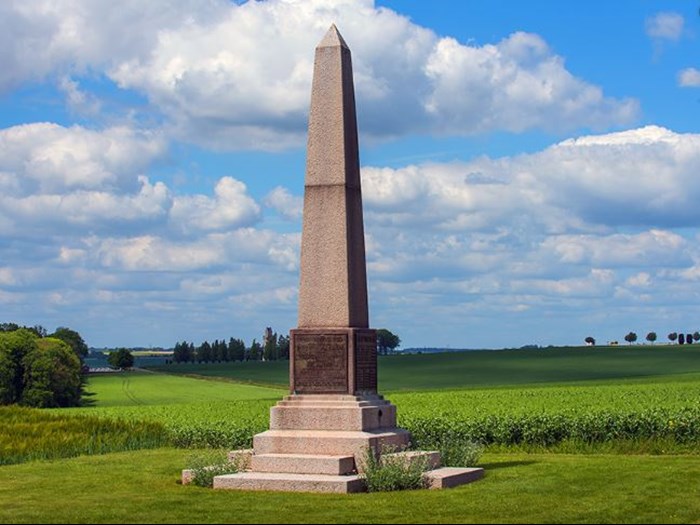
Above: The 18th Division's Memorial at Thiepval
This seems to me to be a pity, as, in my view, 18th Division’s assault on Thiepval in September 1916 represents a significant point in the British Expeditionary Force’s (BEF) tactical and operational ‘learning curve’ in the Great War. As I have written elsewhere, 18th Division offers a particularly rewarding case study because, in the manner of its raising, in its social composition, and in its battle honours, it was a typical British New Army division, while in its outstanding operational performance it can be seen as a symbol of the improvement of the BEF between 1915 and 1918.2 Its history shows what could be achieved, following an unpromising and chaotic start, by an ‘ordinary’ Kitchener division which initially possessed neither the social and geographical cohesion of most Pals and Territorial units nor the political and sectarian binding of 36th (Ulster) Division.
There was a strong London presence in the ranks of the Division from the outset. For example, one historian claims that, when the 10th Battalion of the Essex Regiment – part of 53 Brigade – first assembled in September 1914, about half of its recruits were ‘Eastenders’ from Bethnal Green, Canning Town, Leyton, Poplar, Stratford and Walthamstow.3 But did this still apply in late September 1916, after the Division had experienced nearly a year of trench warfare in France and had taken part in attacks at Carnoy-Montauban (1 July), Trones Wood (13-14 July), and Delville Wood-Longueval (19-21 July) during the early stages of the Somme offensive?
In the absence of detailed and regularly-updated nominal rolls of the battalions of 18th Division for the period in question, it is, of course, impossible to be precise about the changes in the social and geographical composition of such units that had occurred by 26 September 1916. However, the evidence contained in the lists of casualties in Soldiers Died in the Great War does give one at least some clues as to the make-up of battalions at various dates in their operational history. For this essay, I have therefore attempted to analyse the information in Soldiers Died relating to four different battalions in order to gain an idea of how strong 18th Division’s London connection still was at the end of September 1916.4 The battalions concerned are 10/Essex (53 Brigade), 11/Royal Fusiliers and 12/Middlesex (54 Brigade) and 8/East Surreys (55 Brigade). The first three of these were all involved in the assault on Thiepval village on 26 September while 8/East Surreys were caught by a serious German counter-attack at dawn on 30 September during the subsequent struggle for possession of the Schwaben Redoubt.
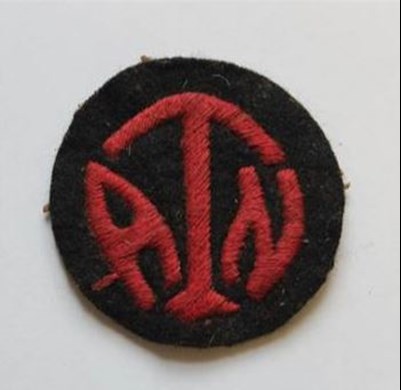
Above: A shoulder patch as worn by members of the Division ('ATN' if said quickly sounds like 'eighteen')
In the case of the 10/Essex, 1,046 other ranks are listed in Soldiers Died for the period from 1914 to 1919. Of those named, 42 (4.01 percent) were killed or died of wounds as a result of the Thiepval operations. Thirteen out of the 42 (30.99 percent) were NCOs. Fifteen of the 42 (35.71 percent) are known to have been born in and around London; 24 (57.14 percent) are known to have enlisted in the city, in Greater London or the near suburbs; and 21 (or 50 percent) are known to have been resident in the London area at the time of enlistment. Their places of residence – by no means all in Essex – included Barking, Bethnal Green, Fulham, Leyton, Plaistow, Stoke Newington, Stratford, Southwark, Tottenham, Wood Green and Willesden. On the other hand, 20 (47.61 percent) are known to have been born outside London and included natives of Norfolk, Suffolk, Kent, Surrey, Hertfordshire and Buckinghamshire.
86 other ranks of 11/Royal Fusiliers are listed as having been killed or died of wounds at Thiepval out of an overall total of 982 (i.e. 8.75 percent). Of these 86 fatal casualties, 25 (29.06 percent) were NCOs, 46 (53.48 percent) are known to have been born in and around London, 54 (or 62.79 percent) to have enlisted there and 54 (62.79 percent) to have been resident in Greater London or the suburbs – stretching from Twickenham, Isleworth, Yiewsley, Ealing, Hanwell and Acton in the west to Whitechapel and Leytonstone in the east, and from Tottenham in the north to Brixton and Tooting in the south. Thirty (or 34.88 percent) of those listed are identified as having formerly served in the Middlesex Regiment. Again, the list includes a fair proportion (39 or 45.34 percent) born outside London and known to have been resident outside the capital on enlistment (30 or 34.88 percent). Some of 11/Royal Fusiliers killed at Thiepval had, in 1914, been living as far afield as Derbyshire, Manchester, Rochdale, Middlesbrough, Shropshire, Burslem, Eccles, Mansfield, Ross on Wye, Pontypridd, Bolton and Gillingham.
12/Middlesex lost 142 other ranks killed or died of wounds at Thiepval. This figure represents by far the largest proportion (22.57 percent) of the total battalion casualties listed (629) in Soldiers Died for any of the four battalions under consideration here. The battalion also lost more NCOs (39) than 10/Essex, 11/Royal Fusiliers or 8/East Surreys – indeed, more than 11/Royal Fusiliers (25) and 10/Essex (13) combined. None of this is surprising, given the fact that 12/Middlesex attacked on the major portion of the relatively narrow frontage allotted to Brigadier-General T.H. Shoubridge’s 54 Brigade on 26 September. Moreover, the battalion had been entrusted with the task of capturing Thiepval village itself, one of the most difficult assignments of the day.5 As in the case of 11/Royal Fusiliers, just over half of the battalion’s dead at Thiepval (76 or 53.52 percent) are known to have been born in and around London. A very high proportion (103 or 72.53 percent) can be identified as having enlisted in London but the number of those who are known to have been actually resident in and around the city is comparatively low (50 or 35.21 percent). The birthplaces of the non-Londoners extended from Aberdeenshire to Cornwall and Jersey within the British Isles and Channel Islands, while a handful hailed from such far-flung locations as New York, Auckland, Cairo and India. 23 (or 16.19 percent) had formerly served in the Royal Fusiliers and 19 of these (or 82.6 percent) were non-Londoners.
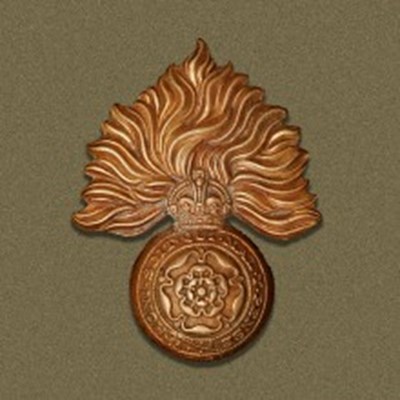
Above: Cap badge of the Royal Fusiliers
The fourth of the battalions under review, 8/East Surreys, has 1.078 other ranks listed in Soldiers Died, 72 (6.67 percent) of whom fell at Thiepval, almost all of them at the Schwaben Redoubt on 30 September 1916. Only ten of the 72 (13.88 percent) were NCOs. 38 (or 52.77 percent) are known to have been born in the London area. Precisely the same total (38) and proportion can positively be stated to have enlisted in London but only 18 (24.99 percent or just under one quarter) are definitely known to have been resident there. Twelve (or 16.16 percent) of those who died with 8/East Surreys at Thiepval had formerly served in the Middlesex Regiment while another ten (13.88 percent) had been in the Royal Sussex Regiment. The latter fact helps to explain why the battalion, at Thiepval, included men born in Brighton, Portslade, Horsham and Midhurst, though there were also some from Suffolk, Cambridge, Norfolk, Hampshire and Buckinghamshire as well as Londonderry and Lancashire.
All these figures do seem to confirm that, in general terms, 18th Division still contained a strong London element when it attacked at Thiepval on 26 September 1916. However, it clearly also included a fair proportion of men who were born, had enlisted or lived outside the capital. Even the true Londoners in any of the four battalions examined do not appear to have originated, in any concentrated form, from a particular area or suburb. It would therefore probably be misleading to suggest that these battalions possessed the same kind of marked social and geographical cohesion as the locally-raised units in, say, 30th, 31st 32nd, 34th or 36th (Ulster) Divisions. Neither did they have the highly-concentrated links boasted by many first-line Territorial battalions in the early months of the war. It follows equally that one must look for reasons other than social and geographical factors to explain the success of the 18th Division’s assault on Thiepval.
The Division’s growing reputation as a reliable assault formation from 1916 onwards owed much to the calibre of its senior commanders and to its battle training. Its GOC from October 1914 to January 1917 was Major-General Ivor Maxse, one of the foremost trainers and tacticians of the war.
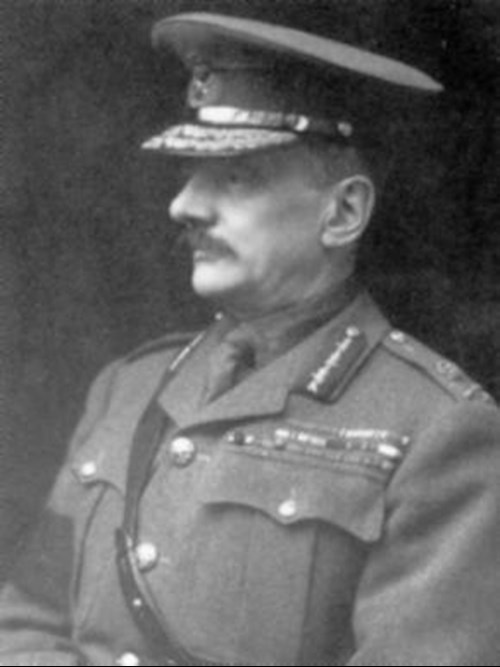
Above: Maxse 'The Black Man'
Maxse has been portrayed by historians, and by those who served with or under him, as a ‘hard-swearing’, ‘bumptious and outspoken’ or ‘intolerant’ officer who had little time for fools. According to John Baynes, his biographer, Maxse became known throughout 18th Division as ‘the black man’, and Basil Liddell Hart, who worked with him after the war, remarked that his long drooping moustache gave him the look of a Tartar chief – ‘all the more because the descriptive term ‘a Tartar’ so aptly fitted his manner in dealing with lazy or inefficient seniors and subordinates’. Liddell Hart was careful to add, however, that Maxse’s ‘fierce’ and ‘electrifying manner’ concealed a warm heart and ‘he particularly liked people who showed that they were not afraid of him’.6 What is beyond question is that his qualities as a trainer of troops was recognised and greatly appreciated by senior and subordinate officers alike. Harold Hemming, an officer in 84th Brigade RFA in 1915, recalled that Maxse’s fortnightly conferences resembled ‘a university course on how to make a fine fighting division out of 20,000 semi-trained albeit enthusiastic soldiers’ while Hubert Gough, the GOC Reserve (Fifth) Army, under whom 18th Division fought at Thiepval – was keen to acknowledge Maxse’s abilities. As he subsequently wrote:
Maxse had an immense capacity for grasping the important points in training…Quick and energetic…he never failed to encourage initiative among his subordinates; he drove them hard, but one and all, long before they had finished their experiences of fighting the Germans under his command, realised the soundness and value of his training, and thanked him for it.7
Maxse’s training principles were fully applied at Thiepval, where his emphasis on careful preparation and battle drill were key ingredients in the recipe for success. As he observed after the battle, with sufficient time to prepare a set-piece assault on a definite and limited objective, ‘I believe a well trained division can capture any “impregnable” stronghold and this doctrine has been taught to 18th Division’. Maxse himself paid tribute to the valuable part played by II Corps commander, Claud Jacob, and BGGS, Philip Howell, in this process. As soon as 18th Division moved into the II Corps sector on 9 September, arrangements were made to acquaint all brigade, battalion and company commanders with the ground and the approaches to it. At Maxse’s request, Howell gave a lecture at II Corps headquarters to brigade and battalion commanders in which he covered local tactical conditions and the lessons of the previous fighting at Thiepval. Several battalion commanders told Maxse afterwards that the lecture had inspired them to inject ‘life and intelligence into their work of preparation’ and that they ‘felt they were being trusted’.8
In the matter of assault formations, the Division’s policy was to ‘Teach, drill and practice a definite form of attack so that every officer and man shall know it thoroughly. On this basis of theory and knowledge common to all any brigade, battalion or company commander varies his attack formation to suit any situation which may be peculiar to his front and to his objective’. The main reason for this system, Maxse stated, ‘is that all ranks thus know at least one attack formation thoroughly’. The formation could be varied according to circumstances and at short notice, though experience had showed that subordinate commanders had neither the time nor the opportunity to learn a new attack formation shortly before an assault. Officers could, however, ‘invent and explain a variation of their normal procedure in a few moments and this is just what they did in the case of the [11/Royal] Fusiliers at Thiepval’. Maxse and his staff also stressed the importance of telling subordinates as much as possible about impending operations long before they took place, in order to engender ‘team’ spirit. Maxse thought that it was better to risk information leaking out through captured prisoners than ‘to run the greater risk of ordering infantry over the parapet unacquainted with what they are expected to do or where they are to go’.9
At Thiepval, 18th Division was indeed fortunate to have several subordinate commanders at brigade or battalion level who could meet Maxse’s exacting standards. 53 Brigade, for example, was commanded by Brigadier-General H.W. Higginson, a highly-gifted – and, in my opinion, hugely underrated – tactician who later went on to command 12th (Eastern) Division in 1918.
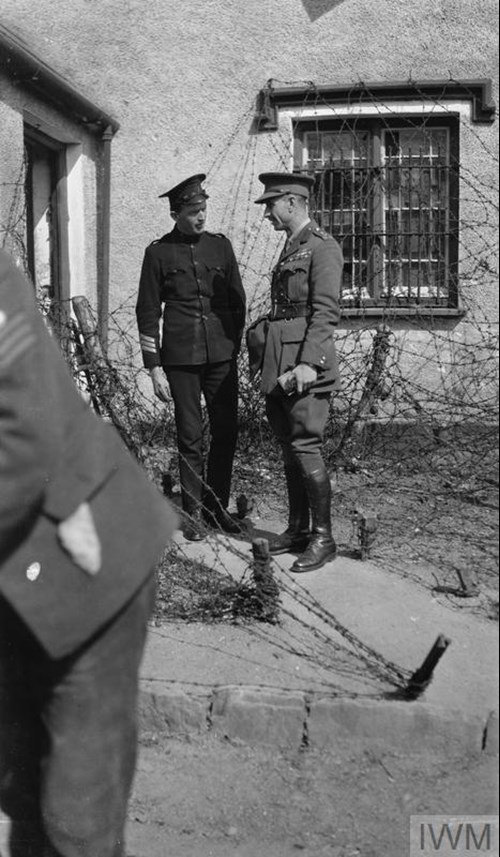
Above: Brigadier General H. W. Higginson, the CO of the 17th Infantry Brigade, in conversation with a Sergeant of the Royal Irish Constabulary at the Ballinhassig Barracks in 1920 (IWM Q 71721)
Instead of automatically filling up the front and assembly trenches with his support waves once the assault waves had gone forward at zero hour, Higginson ensured that these trenches were left empty, so avoiding the worst effects of the inevitable German counter-barrage. Maxse himself believed that Higginson’s ‘fore-thought and instructions saved many casualties in his brigade’.10 Another officer whose battlefield leadership was of crucial importance on 26-27 September was Lieutenant-Colonel Frank Maxwell VC, the CO of 12/Middlesex.
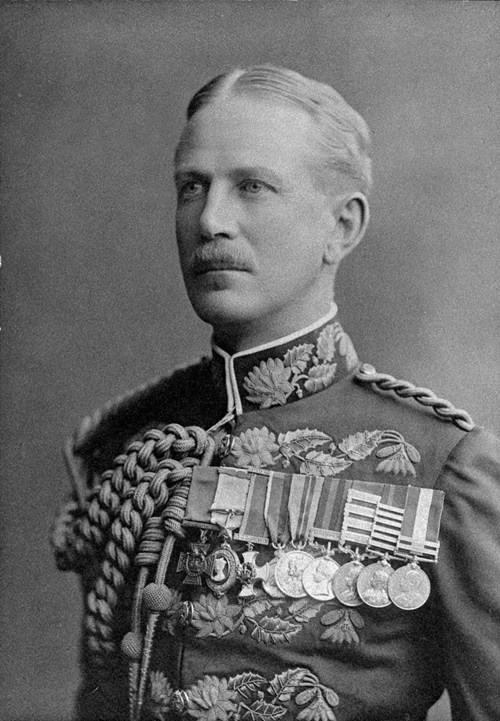
Above: Frank Maxwell VC (National Army Museum)
Maxwell had won his Victoria Cross in South Africa and was a former Aide-de-Camp to Lord Kitchener, who had nicknamed him ‘The Brat’. The divisional historian described his ‘extraordinary personality’ as combining ‘a burning forcefulness’ with ‘an ice-cool exterior’. Two months before Thiepval – at Trones Wood on 14 July – Maxwell had revived a stalled attack and had personally led men of 54 Brigade through the wood like a line of beaters, even joining in an assault on a German strongpoint on the way to the final objective. His own writings suggest that his command style embodied a curious mixture of enlightened modern attitudes and old-fashioned ‘gung-ho’ aggression and intolerance. In June 1916, when addressing the whole battalion, he had instructed his men (like Montgomery and Mountbatten twenty-five years later) to gather close round him and to sit down, have a smoke and listen, assuring them that ‘when we can be a family, we’ll be one and talk to each other vas one’. On the other hand, he saw ‘shell shock’ as ‘a complaint which, to my mind, is too prevalent everywhere’. Maxwell added that ‘I have told my people that my name for it is fright, or something worse, and I am not going to have it’. Following a church parade just over a month before Thiepval, he instructed his men that they should never retire ‘unless they saw a written order from me, which I guessed, and they guessed they would probably not get’. They should ‘kill Germans and eat them, and not give them cigarettes, as if they were best friends’. It is small wonder then, that the battalion commanded by such a figure was chosen to tackle one of the toughest tasks in the attack on 26 September.
By the evening of that day, 54 Brigade had captured most of the village, 6/Northants, in support, having reinforced the assault battalions –11/Royal Fusiliers and 12/Middlesex – in the neighbourhood of the chateau. However, the northwest corner of Thiepval and the German front trenches facing west beyond the first objective remained in enemy hands. As the only surviving battalion CO from the three formations concerned, and with all three units now mixed up and incapable of cohesive action, Maxwell promptly took command of all troops in the vicinity, establishing two defensive lines anchored on the ruined chateau. Maxse declared that ‘Colonel Maxwell thus secured safety for the night and produced a plan of defence under difficult circumstances’. When 7/Bedfords came up during the night to continue the advance next morning, Maxwell – despite having been ordered to ‘clear out on relief’ – stayed on to help the CO of the Bedfords, Lieutenant-Colonel Price, apparently much to the latter’s delight. ‘I was in no mind’, Maxwell wrote. ‘to lose what we had so hardly won by going before he had done his job’. Maxwell was given a serious dressing-down by his brigade commander, T.H. Shoubridge, whose fury was increased because, as Maxwell put it, he knew ‘I would do it again if even the King had given me the order’. It was popularly believed in the Division that Maxwell had even retorted to Shoubridge: ‘ What are you grousing about? I’ve got you another medal’.11
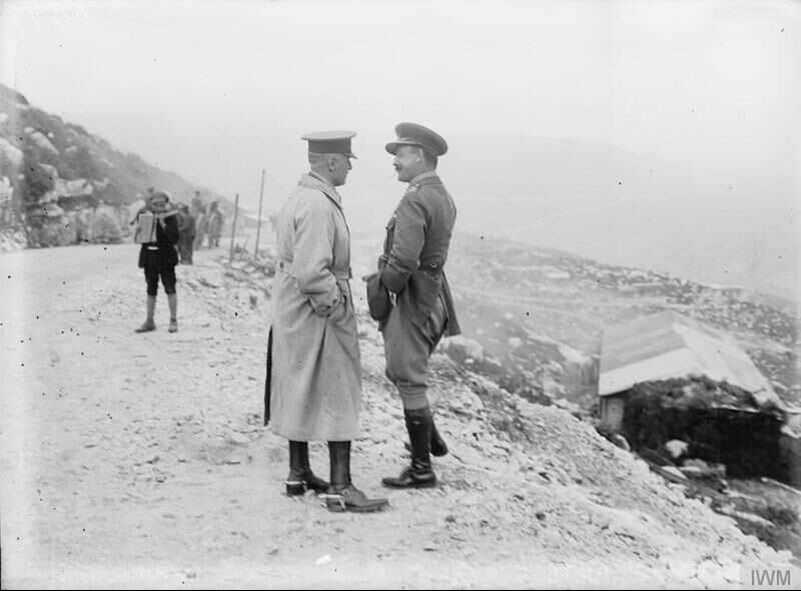
Above: 'Major-General Thomas Herbert Shoubridge, the Commander of the 7th Division (right), in conversation with another British General' (IWM Q 26899)
Shoubridge – nicknamed ‘Harry Tate’ because of his resemblance to the famous music hall artist – was ‘normally the last word in courtesy and elegance’ according to Jonathan Walker, but he sometimes lost his patience with argumentative or independent-minded subordinates. The following year, when elevated to the command of 7th Division, Shoubridge removed the able H.R. Cumming from command of 91 Brigade when, at Bullecourt, the latter questioned his orders once too often.12 Nevertheless, it would be quite wrong to picture Shoubridge simply as a stuffy martinet. Shoubridge’s handling, with Lieutenant-Colonel Price, of the difficult night relief by 7/Bedfords, earned the unqualified admiration of Maxse himself, who judged that it revealed a system of training in 54 Brigade which reflected great credit on Shoubridge and his battalion commanders: ‘They had the pluck to attempt an operation which might have led to a disaster and they had sufficient confidence in the capacity of their subordinates to warrant them in the risk they took.’13
Three Victoria Crosses were won by officers and men of 54 Brigade at Thiepval, two of them being awarded to privates in Maxwell’s battalion, 12/Middlesex. Both men, Private Frederick Edwards and Private Robert Ryder, were members of that battalion’s ‘B’ Company and each man acted with considerable personal initiative and gallantry when their officers had become casualties. Edwards knocked out a German machine-gun post with bombs while Ryder succeeded in clearing a German-held trench by skilful use of his Lewis gun. Edwards, who was then aged twenty-one, was from County Cork. A soldier’s son, he had enlisted in the Royal Garrison Artillery in 1908, when aged only fourteen, and had served in Hong Kong before transferring to the Middlesex Regiment.
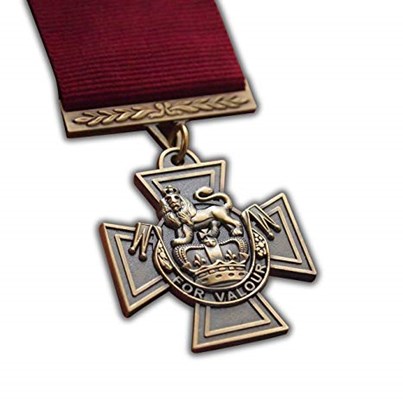
Above: The Victoria Cross
In contrast, the twenty-year-old Ryder, a former labourer, was from Harefield in Middlesex and was a 1914 volunteer.14 It could be argued that, despite their different backgrounds and geographical origins, Edwards and Ryder typified the high standards of battle training with which all ranks of 18th Division were imbued by September 1916. The thoroughness of this training, and of pre-battle briefings, ensured that when the set-piece assault phase of the Division’s success at Thiepval. The fact that by August 1918, such standards were shared by the majority of British and Dominion divisions on the Western Front was demonstrated by the outstanding achievements of the BEF in the Hundred Days. operation was over and the outcome depended on an intense, close-quarters ‘soldier’s battle’, the deeds of men like Ryder and Edwards were by no means isolated acts. As the official historian observes, the ‘prowess of the individual soldier’ largely determined the issue at Thiepval: ‘For the most part, the enemy fought to the death; he was only to be overcome by desperate courage, skill-at-arms, and the enterprise of small groups of men, often led by privates after officers and NCOs had been killed or wounded.’15 I venture to suggest that it was the divisional ethos – influenced, above all, by Maxse – and the quality of training, rather than social cohesion or local unit identity, that underpinned 18th
Prof Peter Simkins, Patron of The Western Front Association
Notes
1 The most accurate description of the location of the 18th Division’s Memorial in relation to the site of the original Chateau is given in M. Stedman’s Thiepval, in the Battleground Europe series (London & Barnsley: Leo Cooper/Pen & Sword, 1995), pp. 185-7.
2 See, for example, P. Simkins, ‘The War Experience of a Typical Kitchener Division: The 18th Division, 1914-1918’, in H. Cecil and P.H. Liddle (eds.), Facing Armageddon: The First World War Experienced (London & Barnsley: Leo Cooper/Pen & Sword, 1996), pp. 297-8.
3 J.W. Burrows, Essex Units in the War, 1914-1919: Vol.6, The Essex Regiment, Service Battalions (Southend: John H. Burrows, 1935), p. 136. See also Lieutenant-Colonel T.M. Banks & Captain R.A. Chell, With the 10th Essex in France (London: Burt & Sons, 1921), p. 5.
4 For this purpose, I used the CD-Rom version of Soldiers Died, which has recently become available from the Naval and Military Press. Much of the statistical information in the present essay is drawn from this source.
5 Major-General F.I. Maxse, The 18th Division in the Battle of the Ancre, printed report, December 1916, pp.7-13. Copies of this report, often referred to as ‘The Red Book’, can be found in the Maxse papers in the Imperial War Museum’s Department of Documents, IWM 69/53/8, and also in the Museum’s Department of Printed Books. See also Captain W. Miles, Military Operations: France and Belgium, 1916, Vol.II (London: Macmillan, 1938), pp. 404-407; Stedman, Thiepval, pp. 92-5; J. Baynes, Far from a Donkey: The Life of General Sir Ivor Maxse, KCB, CVO, DSO (London: Brassey’s, 1995), pp. 149-65; Captain G.H.F. Nichols, The 18th Division in the Great War (Edinburgh & London: Blackwood, 1922), pp. 85-92.
6 M. Middlebrook, The First Day on the Somme, 1 July 1916 (London: Allen Lane, 1971), p. 279; P. Griffith, Battle Tactics of the Western Front: The British Army’s Art of Attack, 1916-1918 (New Haven: Yale University Press, 1994), p. 184; Baynes, Far from a Donkey, pp. 125, 223-4; B.H. Liddell Hart, The Memoirs of Captain Liddell Hart : Vol.1 (London: Cassell, 1965), p. 43.
7 Lieutenant-Colonel H.H. Hemming, unpublished account, IWM, Department of Documents, PP/MCR/155; General Sir H. Gough, The Fifth Army (London: Hodder & Stoughton, 1931), pp. 147-8.
8 Maxse, The 18th Division in the Battle of the Ancre, pp. 3-4. Howell, the BGGS of II Corps, was killed by a shell at Authuille early in October 1916.
9 Maxse, The 18th Division in the Battle of the Ancre, pp. 4-5.
10 Maxse, The 18th Division in the Battle of the Ancre, p.6.
11 Nichols, The 18th Division in the Great War, pp. 85-100; Baynes, Far from a Donkey, pp. 154-8; C. Maxwell (ed.), Frank Maxwell, Brigadier-General, VC, CSI, DSO: A Memoir and Some Letters, (London: John Murray, 1921), pp. 138-162; Miles, Military Operations, 1916, II, pp. 404-407, 416-417; ‘ER’ The 54th Infantry Brigade, 1914-1918: Some Records of Battle and Laughter in France (Aldershot: Gale & Polden, 1919), pp. 51-67; Maxse, The 18th Division in the Battle of the Ancre, pp. 7-12.
12 J. Walker, The Blood Tub: General Gough and the Battle of Bullecourt, 1917 (Staplehurst: Spellmount, 1998), pp. 61, 167-70; H.R. Cumming, A Brigadier in France, 1917-1918 (London: Cape, 1922), pp. 44, 53, 56-7, 74-84; The National Archives of the UK (TNA): PRO WO 95/1632, 7th Division, Headquarters and General Staff War Diary, January –May 1917; PRO WO 95/1667, 91 Infantry Brigade War Diary, January-November 1917.
13 Maxse, The 18th Division in the Battle of the Ancre, p. 11.
14 G. Gliddon, VCs of the First World War: The Somme (Stroud: Sutton, 1997), pp. 154-165; Maxse, The 18th Division in the Battle of the Ancre, p. 9.
15 Miles, Military Operations, 1916, II, p. 407.





